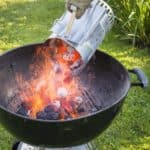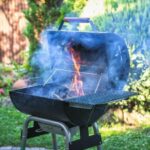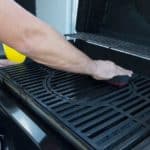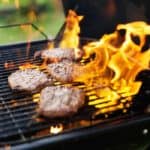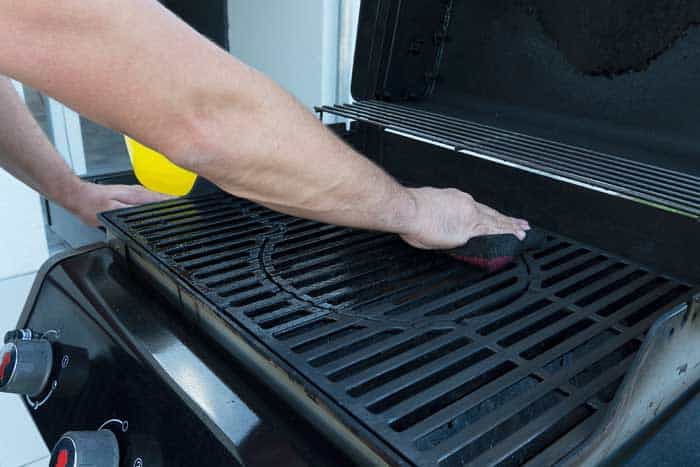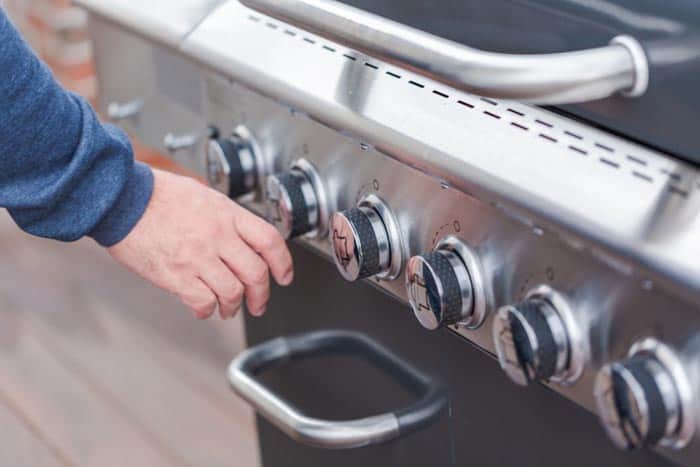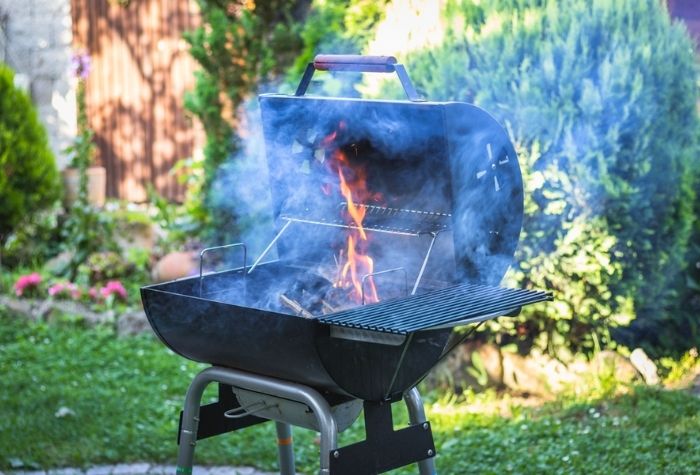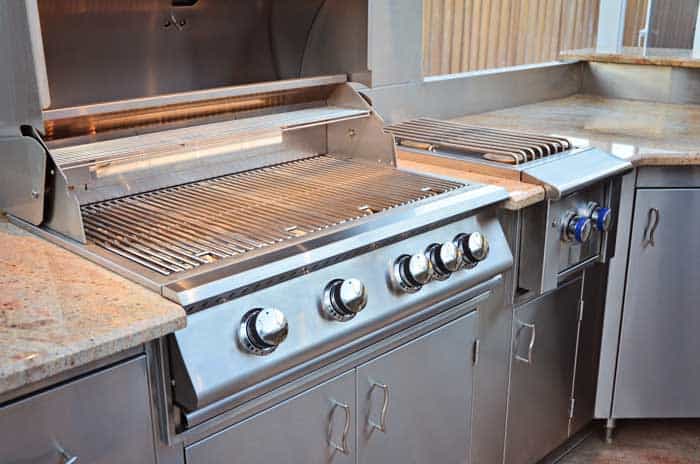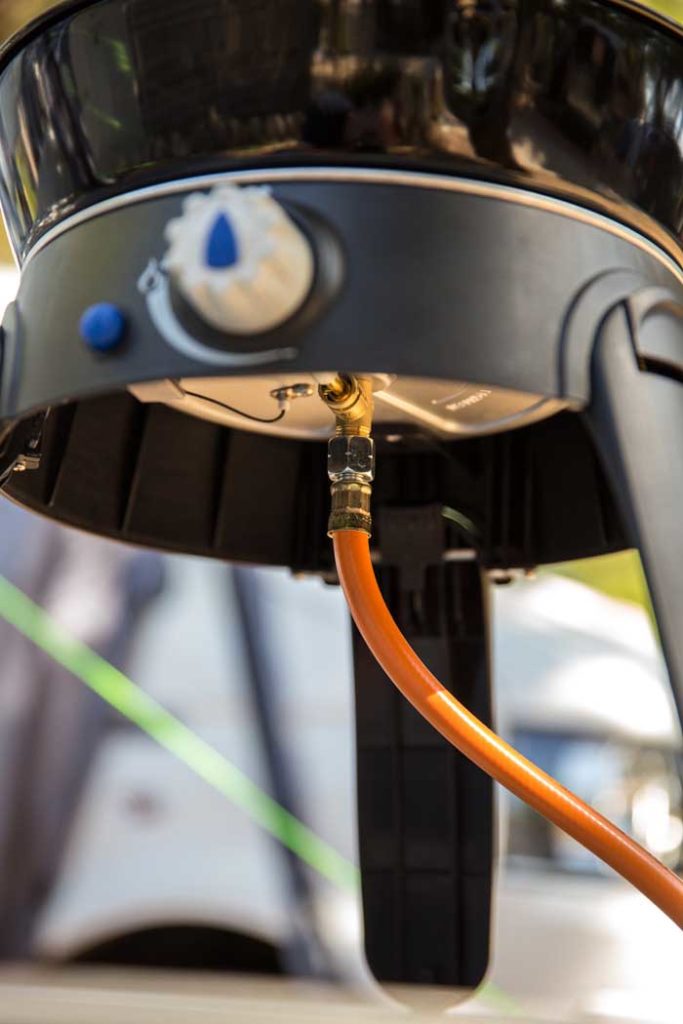Embrace the chill with winter grilling. Discover our essential do’s and don’ts, best recipes, and top tips for cold weather barbecue cooking.
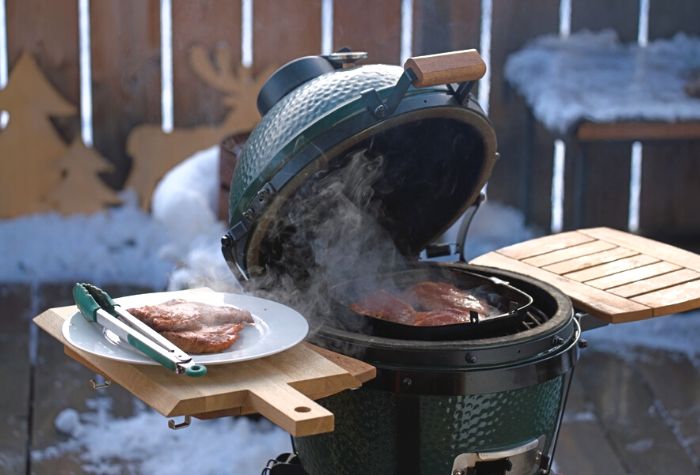
- Can You Grill in the Winter?
- Find the Right Location
- Consider Grill Type
- Ensure Good Visibility
- Check Your Fuel
- Have Your Tools on Hand
- Do Some Winter Cleaning
- Check for Extra Guests
- Keep Your Grill Covered
- Allow Extra Time to Preheat Your Grill
- Grill With the Lid Closed
- Adjust Your Cooking Times
- Stay Food Safe
- Pick an Easy Recipe
- Dress for the Job
- Check Hoses & Regulators
- Be Prepared
- Never Bring the Grill Inside
Cold weather grilling can present a unique set of challenges that sets it apart from barbecue cooking during the summer. Whether it’s battling cold winds, maintaining consistent heat, or dealing with snow-covered patios, grilling in winter is a different beast altogether.
Embracing the chill and mastering the art of winter grilling is a skill every backyard barbecue enthusiast should have in their arsenal. From shielding your grill from the elements or getting the most out of your charcoal or propane gas, several factors can make or break your cold weather BBQ grill session.
If you’re looking to conquer the cold and grill like a pro this winter, you’ve come to the right place. Dive into our comprehensive guide and discover how to grill in the winter with these essential tips and tricks.
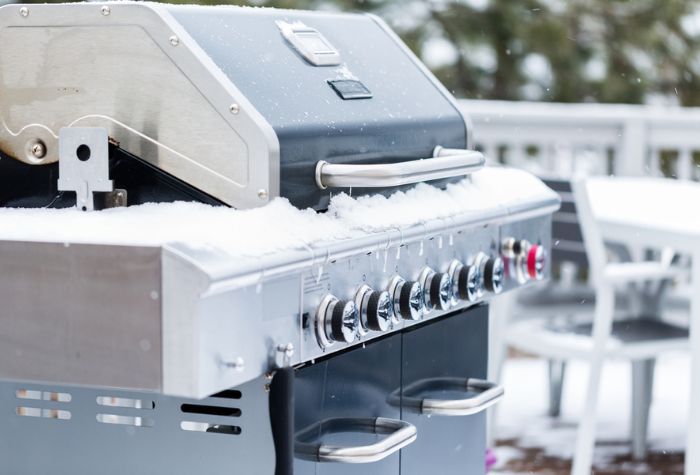
Can You Grill in the Winter?
Yes, you can grill in the winter, and many barbecue enthusiasts do so with great success. While winter grilling presents unique challenges, such as maintaining consistent temperatures and ensuring safety on snowy or icy surfaces, with the right preparations and precautions, you can enjoy cold weather grilling without fail.
By selecting a sheltered grilling spot, allowing extra time for preheating, using specialized equipment like grill lights, and monitoring cooking temperature closely, you can enjoy your favorite grilled dishes even in the colder months.
Find the Right Location
When grilling in the winter, it’s important to find the right location. Choose a spot that’s sheltered from the wind and has a clear path to and from your home, and shovel any snow and grit paths if necessary.
Being able to grill close to your house can be preferable (especially if it’s particularly cold!) but be sure to adhere to the usual safety rules that you would when grilling at any other time of year – don’t set your grill too close to anything that could melt with the heat or possibly be flammable.
If wind is an issue, try to position yourself behind a wall or building (at least 3 meters away for safety) or consider making/purchasing a windbreaker.
Consider Grill Type
Not all grills are created equal, and nowhere is this best seen than with winter grilling. The nuances of different grill types really come to the fore in the cold weather, so take a second to think about how your grill might perform: Charcoal grills will take even longer to heat up and will need more charcoal, while gas grills may experience reduced gas flow due to cold propane tanks. On the other hand, pellet grills rely on electricity so connecting it safely will be of paramount importance, and you will have to ensure that the pellets aren’t exposed to moisture.
Ensure Good Visibility
As cozy as it is to have the nights drawing in and getting darker earlier as we enter the winter months, it can make it pretty hard to do anything outside without a decent light source. Keep your grilling space well-lit by installing outdoor lights, using a headlamp, or treating yourself to a specialist grill light.
A good grill light is designed specifically to be attached to the hood of your grill and should be heat-resistant enough to be close to your grill’s flames as well as durable enough to stand up to whatever weather winter throws your way. It should also offer flexible mounting through the use of clams or magnetic bases, so you can change the angle of the light as and when you need to.
Check Your Fuel
If you’re a seasoned summer griller, you’ve probably got a good idea of how much fuel you tend to use for each BBQ session, but grilling in cold temperatures uses a lot more fuel. Ensure you have enough charcoal on hand and that it’s stored somewhere dry and cool. If you use gas, ensure your propane tank is sufficiently full (this is where a propane tank gauge comes in handy), or you have a second tank as backup.
Have Your Tools on Hand
Make sure to gather all the tools you might need before leaving the house. You don’t want to leave the grill unattended to go in and out of the house to grab something you’ve forgotten, especially if the path back is a bit icy. If you need something to keep your grilling tools together, a grilling apron with tool pockets or a grill caddy (like this one on Amazon) are great solutions.
Do Some Winter Cleaning
We all know that we should be giving our grills a general clean after each use and a deep clean at least once or twice during the grilling season, but an extra once-over clean before firing it up for some winter grilling is also a good idea.
Firstly you need to ensure that your grill is clear of any snow or ice. If you find that some of the hinges are frozen closed, knobs are stuck, or that there is ice sitting in the drip tray, wheel your grill into a warmer area, such as a garage, to defrost or use warm (not boiling) water or even a hair dryer to melt it.
Once the grill is clear of snow, give it a quick once over to check that all the hidden spots where grease can accumulate are clean. Grease can cause flare-ups when cooking; when grilling in warmer weather, this is prevented by keeping your grill clean. Frozen grease can be hard to clean, but it’s essential to remove it before lighting your grill as it won’t just melt and ‘burn off’; it’s more likely to spit, which can cause painful burns as well as flare-ups.
When using a gas grill, checking the burner ports and jets for food debris or grease is particularly important. Your flame should burn blue to be giving the right temperature; if it’s burning yellow, it suggests there is a clog that needs to be cleaned out.
Check for Extra Guests
The autumn and winter weather sees all kinds of critters and creatures looking for a safe place to shelter. Before firing up your grill, especially if it’s been closed for a while since you last used it, open it up and check for any animals or signs of nesting.
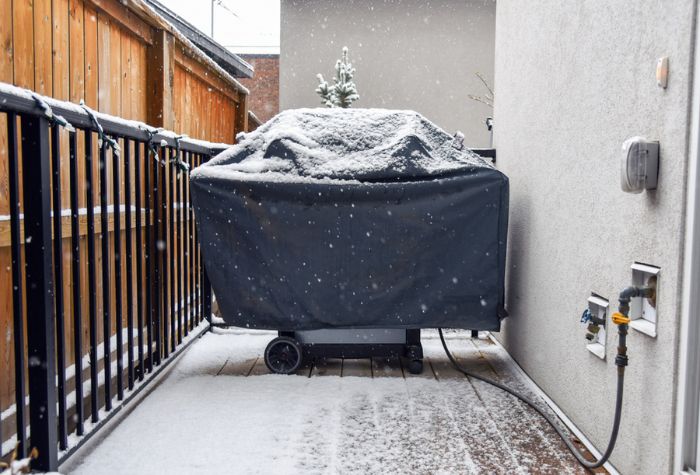
Keep Your Grill Covered
Keeping your grill covered when not in use is good advice in general, but it’s even more important to protect it from the elements during winter. Having a good quality and well-fitting grill cover will save you a lot of time having to clear snow or ice.
Allow Extra Time to Preheat Your Grill
Preheating your grill is always important, but it’s especially crucial in the winter. Give your grill extra time to preheat to ensure it reaches the desired temperature; this can take up to twice as long in winter, so factor that into your prep time.
Grill With the Lid Closed
Once you’ve got your grill up to temperature, you want to do your best to maintain it. Whenever possible, grill with the lid closed and avoid opening it as much as possible.
Adjust Your Cooking Times
As well as it taking longer for a grill to heat up in winter, it can also take longer to cook your food, so it’s important to adjust your cooking time accordingly.
Keep an eye on the temperature (don’t rely on the grill temperature gauge, use a good quality digital thermometer) and adjust your cooking times as needed.
If you’re struggling to maintain a steady temperature, especially when smoking during the winter, have a look at using a welding blanket. Welding blankets are heat resistant, meaning that they can be used around a grill or smoker as insulation to help retain heat and create a good ambient cooking temperature.
Stay Food Safe
Since it can take longer for food to cook when grilling in winter, the best way to check if food is ready to be served is by using a probe thermometer to check the internal temperature.
Pick an Easy Recipe
Trying out an elaborate new BBQ recipe probably isn’t the best idea in the depths of winter. Instead, stick with the tried and tested favorites that you know come out great every time. Check out our best winter BBQ ideas for some quick grilling inspiration.
Dress for the Job
Winter gloves might keep your hands warm when shoveling snow, but they are not designed to work as BBQ gloves. Also, don’t have any loose clothing such as scarves or anything with tassel or faux fur trims near the grill; these are typically made of materials that can ignite fast if caught by a spark.
Make sure you are fully equipped with the right gear for the job – heat-proof BBQ gloves are a must and a grilling apron is a great way to protect clothes from any accidental spills or oil spray.
Check Hoses & Regulators
Regular checks of gas grill hoses and regulators should be part of your general grill maintenance anyway, but low temperatures can cause or worsen cracks in the grill hose material.
Be Prepared
Having a fire extinguisher is a safety precaution that should be followed when grilling, no matter the time of year. Don’t let the cold and potentially wet weather fool you into thinking fires aren’t a hazard. Grease fires can happen whatever the weather, so make sure you have a fire extinguisher to hand just in case.
Never Bring the Grill Inside
Lastly, never ever grill inside. As much as it would be nice to be protected from the elements when grilling in winter, there is absolutely no situation where it is suitable to bring a grill inside. If it’s too cold/windy/wet for you to grill outside, then it’s time to fire up the oven or order in.

